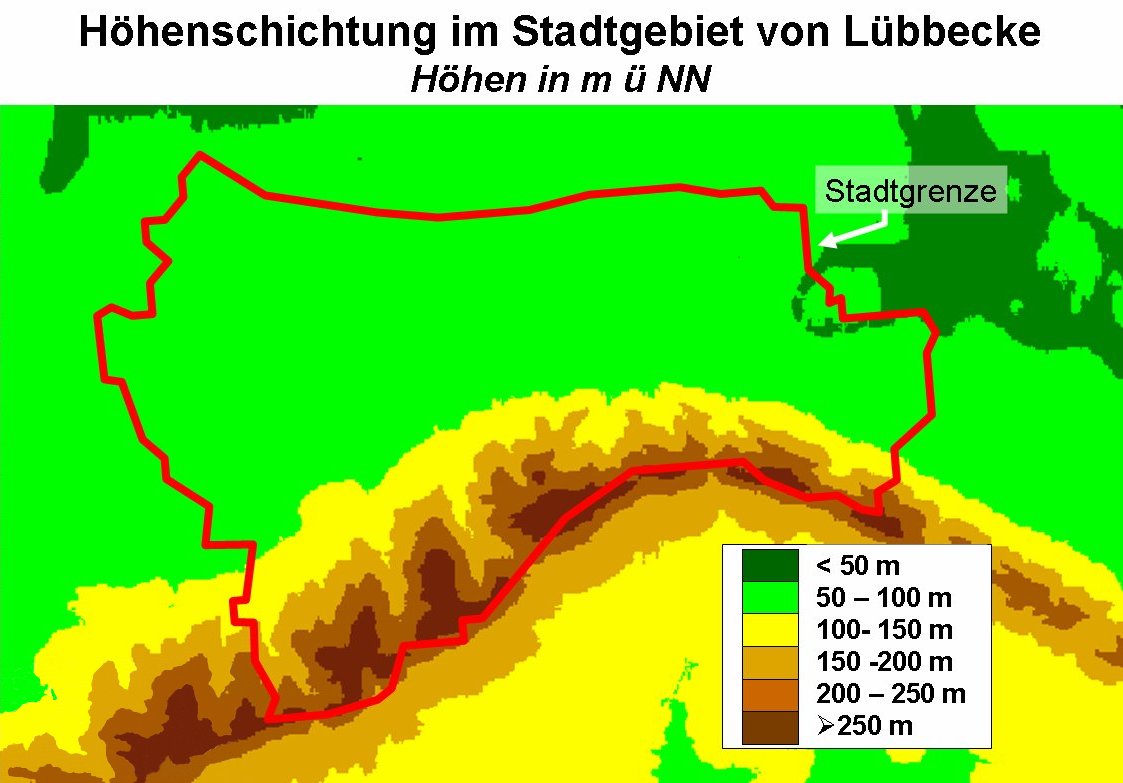|
Westphalian Mill Route
The Westphalian Mill Route''Westphalian Mill Route'', brochure by the Mühlenkreis Minden-Lübbecke, Minden. Accessed on 14 May 2012. (german: Westfälische Mühlenroute) is a circular, long-distance, cycle route in the German district of Minden-Lübbecke and its neighbouring areas in North Rhine-Westphalia. The route is laid out in such a way as to take in 43 historic mills along a circular route of about 320 kilometres. Running along largely quiet country roads, the Westphalian Mill Route takes cyclists through a cultural landscape dominated by the Wiehen and Weser Hills, the North German Plain and the River Weser. As increasing numbers of tourists have used the network of cycleways, tourist accommodation and restaurants have been established on the main routes. There are northern and southern variants of the Mill Route. Both may also be combined with the Minden Museum Railway (e. g. at Hille, Südhemmern, Kleinenbremen), the museum railway at Rahden (e. g. Tonnenh ... [...More Info...] [...Related Items...] OR: [Wikipedia] [Google] [Baidu] |
Hille, Germany
Hille is a community in the Kreis Minden-Lübbecke in the north of East Westphalia, Germany, with approximately 16,000 inhabitants. It was created in 1973 in the framework of the community restructuring of North Rhine-Westphalia through the combining of nine communities of the Minden countryside. The community is named after Hille its largest village. The geography of the community belongs to that of the North German Plain, from its lowest altitude of 45 metres it rises to 251 metres on the ridge of the Wiehengebirge at its southern border. Geography Hille is located in the northeast of the Detmold (region), in the middle of the Minden Land. Hille has portions of the ecologic areas of the Wiehen Hills, the Lübbecke Loess Country and the Rahden-Diepenauer Sandy Moorlands (boglands). The southern portion of the community is located in the transition zone from the North Germain Plain to the Central Uplands (piedmont). This especially apparent with the ridgelike structure of ... [...More Info...] [...Related Items...] OR: [Wikipedia] [Google] [Baidu] |
Hüllhorst
Hüllhorst is a municipality in the Minden-Lübbecke district, in North Rhine-Westphalia, Germany. Geography Hüllhorst is situated on the south side of the Wiehengebirge, approx. 5 km south-east of Lübbecke and 20 km west of Minden. Neighbouring places * Lübbecke * Preußisch Oldendorf * Hille * Bad Oeynhausen * Löhne * Kirchlengern * Rödinghausen Subdivisions of the municipality Hüllhorst consists of 9 districts (Population as of December 31, 2006): * Ahlsen-Reineberg (1,009 inhabitants) * Bröderhausen (687 inhabitants) * Büttendorf (794 inhabitants) * Holsen (1,080 inhabitants) * Huchzen (45 inhabitants) * Hüllhorst (2,761 inhabitants) * Oberbauerschaft (2,998 inhabitants) * Schnathorst (2,850 inhabitants) * Tengern (2,038 inhabitants) See also * Hüllhorst Comprehensive School Hüllhorst Comprehensive School is located in Hüllhorst, Nordrhein-Westfalen, Germany, and has about 1,250 pupils on roll. The school's staff includes over 95 teachers. In add ... [...More Info...] [...Related Items...] OR: [Wikipedia] [Google] [Baidu] |
Großes Torfmoor
The Großes Torfmoor (also called the ''Hiller Moor'' or ''Nettelstedter Moor'') is a raised bog located in the northeast of the state of North Rhine-Westphalia (in the district of Minden-Lübbecke) in Germany south of the Mittelland Canal. It is between the town of Lübbecke Lübbecke (; wep, Lübke) is a town in northeast North Rhine-Westphalia in north Germany. This former county town lies on the northern slopes of the Wiehen Hills (''Wiehengebirge'') and has around 26,000 inhabitants. The town is part of district ... and the community of Hille. The bog is a nature reserve and is under special protection from the European Union because of the bird species living there. The LIFE-Nature project €1,800,000 have been spent since 2003 towards the regeneration of the bog by the LIFE-Nature project. The project has also installed 14 km of new nature trails, which include informational panels that guide visitors and explain the history of and future plans for the bog ... [...More Info...] [...Related Items...] OR: [Wikipedia] [Google] [Baidu] |
Lübbecke
Lübbecke (; wep, Lübke) is a town in northeast North Rhine-Westphalia in north Germany. This former county town lies on the northern slopes of the Wiehen Hills (''Wiehengebirge'') and has around 26,000 inhabitants. The town is part of district of Minden-Lübbecke within the ''Regierungsbezirk'' of Detmold in the Ostwestfalen-Lippe region. Lübbecke was first mentioned in the records in 775 as ''hlidbeki'' and was given town rights in 1279. Geography Lübbecke is situated just north of the Wiehen Hills, approx. north of Herford and west of Minden. Location Lübbecke is located in northeast North Rhine-Westphalia, north of East Westphalia-Lippe (''Ostwestfalen-Lippe''), in the southwestern part of the district of Minden-Lübbecke. From a landscape perspective, the town lies in the west of the Minden Land. Geographically, most of the built-up area is on the North German Plain. Only its southern suburbs lie on the northern slope of the Wiehen Hills, whose crest that marks t ... [...More Info...] [...Related Items...] OR: [Wikipedia] [Google] [Baidu] |
Climatic Health Spa
A spa is a location where mineral-rich spring water (and sometimes seawater) is used to give medicinal baths. Spa towns or spa resorts (including hot springs resorts) typically offer various health treatments, which are also known as balneotherapy. The belief in the curative powers of mineral waters goes back to prehistoric times. Such practices have been popular worldwide, but are especially widespread in Europe and Japan. Day spas and medspas are also quite popular, and offer various personal care treatments. Origins of the term The term is derived from the name of the town of Spa, Belgium, whose name is known from Roman times, when the location was called ''Aquae Spadanae'', sometimes incorrectly connected to the Latin word ''spargere'' meaning to scatter, sprinkle or moisten. Since medieval times, illnesses caused by iron deficiency were treated by drinking chalybeate (iron-bearing) spring water (in 1326, the iron-master Collin le Loup claimed a cure,Medical Hydrology, ... [...More Info...] [...Related Items...] OR: [Wikipedia] [Google] [Baidu] |
Preußisch Oldendorf
Preußisch Oldendorf () is a town in the Minden-Lübbecke district, in North Rhine-Westphalia, Germany. In 1905 the town name ''Oldendorf'' was changed officially by putting "Preußisch" in front of it, to make the distinction from other towns with the same name more easy (especially for mail and train stations). Geography Preußisch Oldendorf is situated on the north side of the Wiehengebirge, approx. 9 km west of Lübbecke, 24 km north-west of Herford and 30 km east of Osnabrück. Extent and land usage of the borough The town's borough has an area of 66.78 km2. Its maximum north–south extent is about 11 km, its maximum east–west extent around 10 km. The highest point in the district is the Altes Verbrenn (291.1 m) in the southeast of the borough. The lowest point (45.8 m) lies in the northwest of the borough in the valley of the Großer Dieckfluss. Its entire northern boundary does not exceed 50 m at any point. The territory of the borough i ... [...More Info...] [...Related Items...] OR: [Wikipedia] [Google] [Baidu] |
Oppenwehe Moor
The Oppenwehe Moor (german: Oppenweher Moor) is a raised bog in the natural region of Diepholz Moor Depression (''Diepholzer Moorniederung'') in North Germany. It covers a total area of around 870 ha''Naturschutzgebiet Oppenweher Moorlandschaft.'' In: ''Schutzgebiete unseres Kreises'', No. 3. 4. Auflage. Kreis Minden-Lübbecke (publ.), 2011, retrieved 25 May 2016 (pdf; 885 kB). and lies in the northeastern part of the German state of as well as in . It is one of the most ... [...More Info...] [...Related Items...] OR: [Wikipedia] [Google] [Baidu] |
Levern
Stemwede is a municipality in the Minden-Lübbecke district, in North Rhine-Westphalia, Germany. Following a recent regional reorganization, in 1973, the former districts of Dielingen-Wehdem and Levern were consolidated and the district of "Stemwede" created. The new name was chosen because for a thousand years the area along the Stemweder Berg (mountain) was popularly referred to as Stemwede. Geography Stemwede is situated approximately 20 km north-west of Lübbecke Lübbecke (; wep, Lübke) is a town in northeast North Rhine-Westphalia in north Germany. This former county town lies on the northern slopes of the Wiehen Hills (''Wiehengebirge'') and has around 26,000 inhabitants. The town is part of district .... Subdivisions of the town The municipality of Stemwede is divided into 3 districts (consisting of the following villages each): References External links * * {{MindenLübbecke-geo-stub ... [...More Info...] [...Related Items...] OR: [Wikipedia] [Google] [Baidu] |
Rahden Museum Farm
Rahden is a town in the far north of North Rhine-Westphalia between Bielefeld and Bremen and between Hanover and Osnabrück. Rahden is part of the Minden-Lübbecke District in East Westphalia-Lippe. Rahden was first mentioned in 1033 and 1816 to 1831 was county town of the district Rahden. Geography Rahden is situated approximately north of Lübbecke and north-west of Minden. It is the northernmost town of North Rhine-Westphalia. Town subdivisions The town of Rahden consists of 7 districts: * Rahden (4,689 inhabitants) * Kleinendorf (4,242 inhabitants) * Varl (1,676 inhabitants) * Sielhorst (791 inhabitants) * Preußisch Ströhen (2,075 inhabitants) * Wehe (1,730 inhabitants) * Tonnenheide (1,784 inhabitants) Mayors Bert Honsel (CDU) was elected mayor in September 2015 with 61.1% of the votes. International relations Rahden is twinned with: * Glindow (Berlin, Germany) -- since 1990 * Galgahévíz (Hungary Hungary ( hu, Magyarország ) is a landlocked co ... [...More Info...] [...Related Items...] OR: [Wikipedia] [Google] [Baidu] |
Glacial Erratic
A glacial erratic is glacially deposited rock differing from the type of rock native to the area in which it rests. Erratics, which take their name from the Latin word ' ("to wander"), are carried by glacial ice, often over distances of hundreds of kilometres. Erratics can range in size from pebbles to large boulders such as Big Rock () in Alberta. Geologists identify erratics by studying the rocks surrounding the position of the erratic and the composition of the erratic itself. Erratics are significant because: *They can be transported by glaciers, and they are thereby one of a series of indicators which mark the path of prehistoric glacier movement. Their lithographic origin can be traced to the parent bedrock, allowing for confirmation of the ice flow route. *They can be transported by ice rafting. This allows quantification of the extent of glacial flooding resulting from ice dam failure which release the waters stored in proglacial lakes such as Lake Missoula. Err ... [...More Info...] [...Related Items...] OR: [Wikipedia] [Google] [Baidu] |




